Interior design has become bigger than ever in our days. Together with architects and engineers, interior design experts find the best functional and decorative solutions to make a space both practical, safe and attractive.
Interior design comes in a range of formats and formulas, sometimes utterly distinct and other times with only the subtlest of differences. Yet each presents its own flavor, finish and experience that render a space in unique chapters of inspiration, history and creative endeavor. Therefore, knowing what sets different interior design styles apart may be a lot handier than you might realize, ensuring you pick the perfect style for your space and ambitions, and helping you achieve visual perfection with a lot less hassle.
Your style can change over time which can create a big problem when you feel the need to redesign your living space. Often, we get confused and start combining several styles which results in no style. Below you can find inspiration and hopefully zero in on a style that fits your personality and your home.
#1 Modern Style
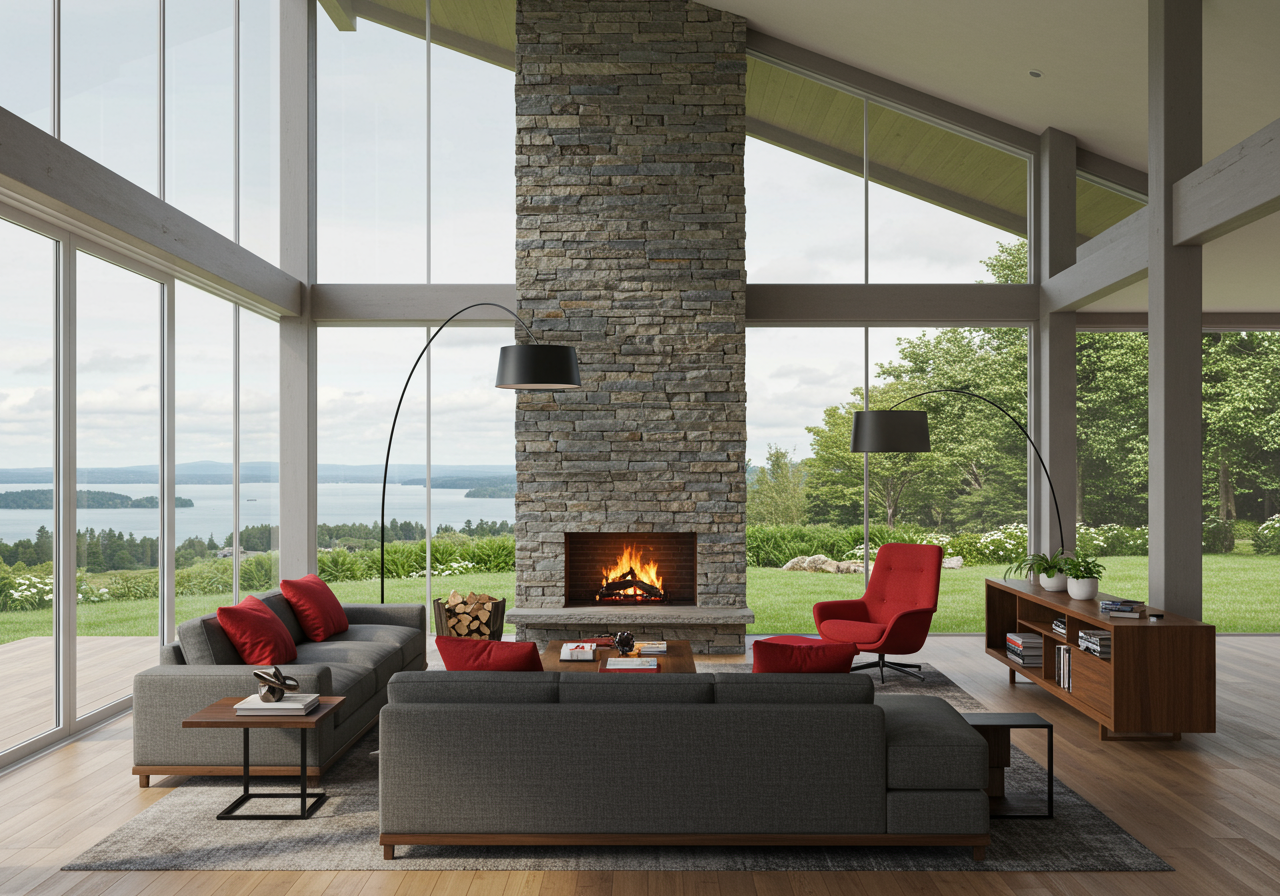
Modern living room at the Burkehill Residence by Craig Chevalier and Raven Inside Interior Design
Modern architecture and design, including interiors, is a broad umbrella term for design styles united by a common intention – a celebration of material, technology, and composition through authenticity, transparency, and efficiency.
Inspired by the Modernist art movement that preceded it, the Modernist style, born at the dawn of the 20th century, reinvented our relationship with space and aesthetics to bring us closer in touch with it. A building was more than an inhabitable shell; it was now a machine for living in.
Modernist interiors are therefore often a complex overlay of functional programming, careful compositions and clearly articulated lines and geometry. The inherent materiality of a form is an integral part of the design language here, as is an emphasis on visual and functional simplicity.
#2 Mid-Century Modern Style
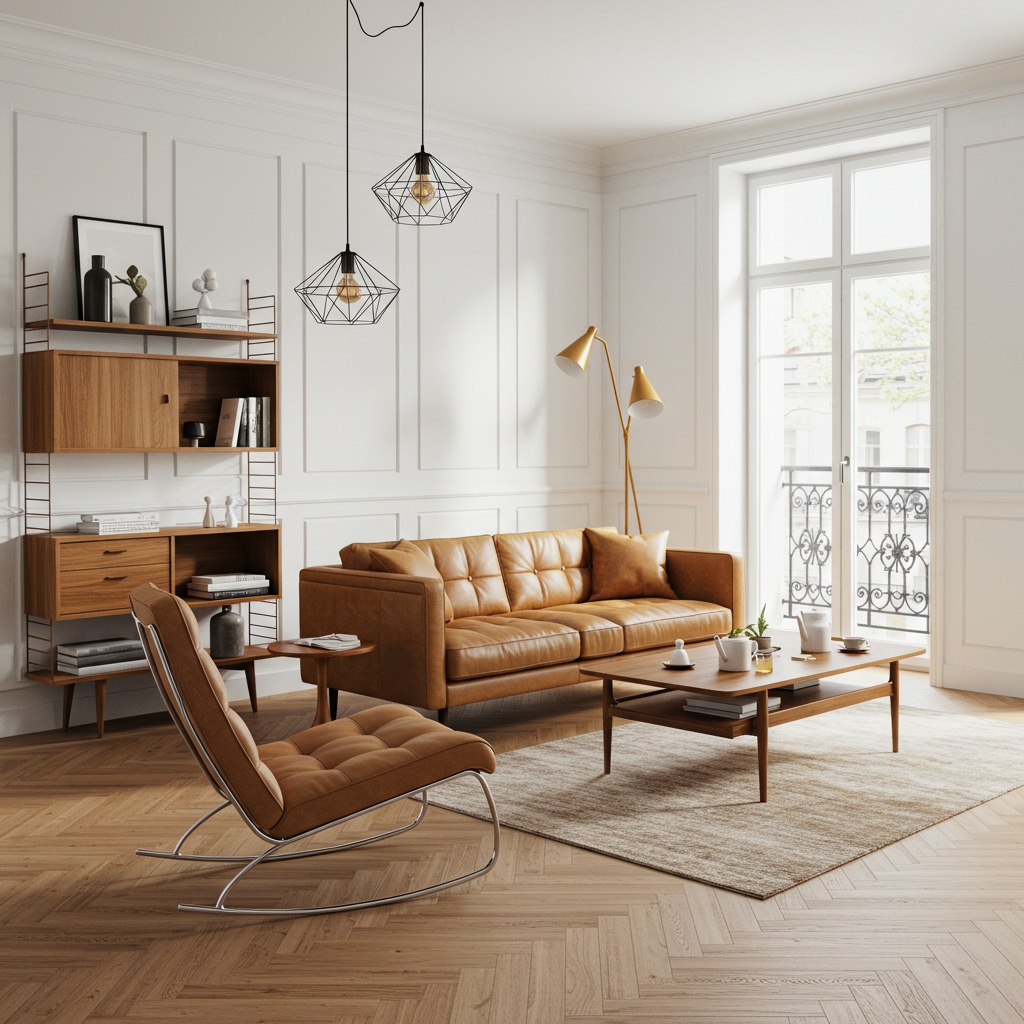
Mid-century modern living room design | Image credit: Maisons du Monde
Mid-Century modern describes a style that gained momentum in the aftermath of the Second World War. With echoes of the Bauhaus and International movement, this arm of modernist interior design is set apart by its vivid use of color, crisp lines, and interactive dialogues with nature and the outdoors.
The emphasis here is on strengthening interpersonal bonds; space was viewed as being more than just a functional container, and emerged as a canvas for the personal and social ideologies that drove humanity post WWII. Generous, open planned interiors with an emphasis on common, shared areas, broad interfaces between the home and its natural surround, and a functional and visual clarity integral to the Modernist style mark these spaces.
The color palette of Mid-century modern style usually floats in hues of orange, yellow, green and brown, although deviations are not uncommon.
#3 Minimalist Style
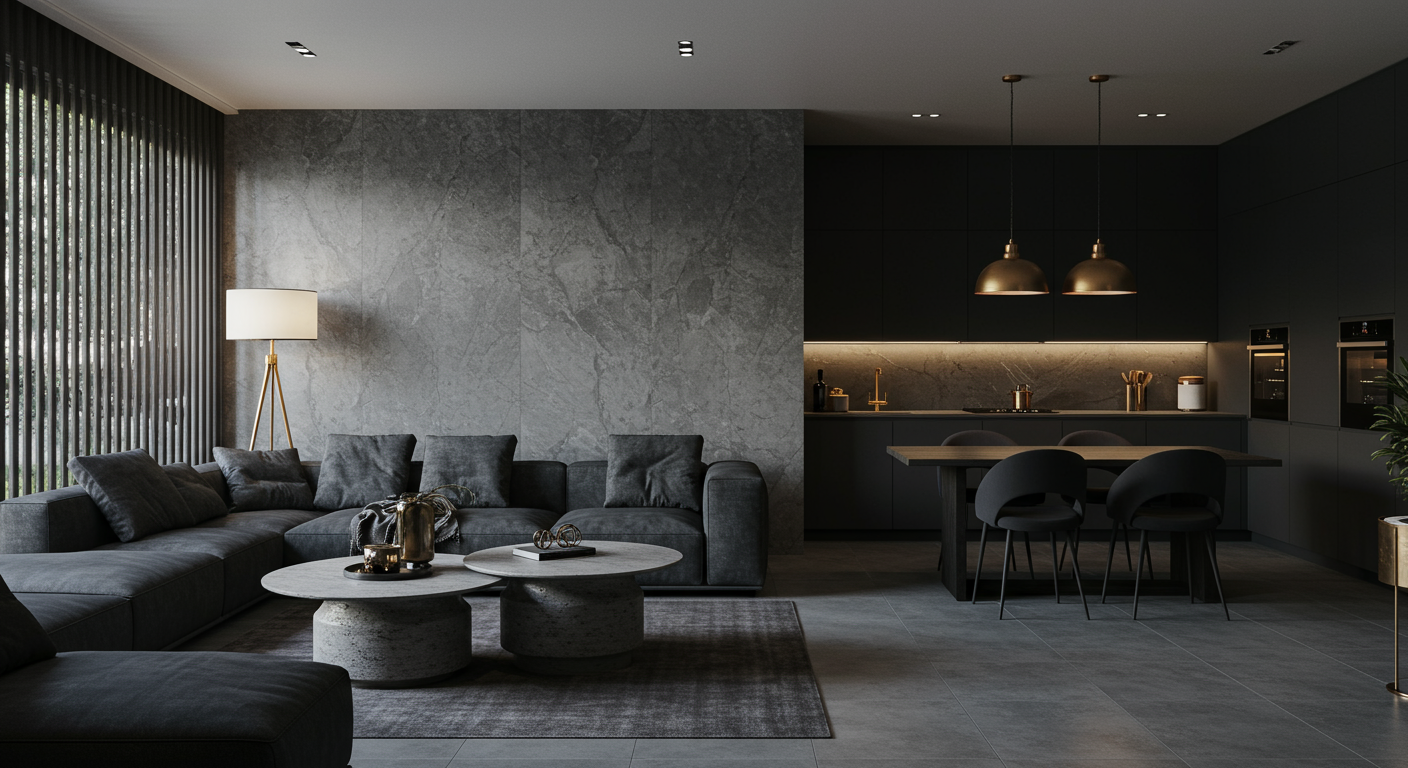
Minimalist living room design at the HD House | Image credit: YOMAdesign
Sparked by the Minimalist arts movement of the 1960s and 70s, and inspired by
traditional Japanese design and Zen philosophy, minimalist interiors express the driving concepts of modernism in an almost puritanical palette.
Stripping things down to their bare basics, minimalism offers us an aesthetic that relies on the efficiency of the design. Devoid of distractions or clutter, minimalist interiors are streamlined to maximize on bold visual impacts and the underlying use of the space.
Elements and motifs are kept to a bare minimum, with concealed storage and careful detailing playing their due part. Colors are explored in hushed tones, with an accent or two taking center stage.
The repetition and movement of lines and a generous introduction of natural light keep these interiors light and dynamic.
#4 Scandinavian Style
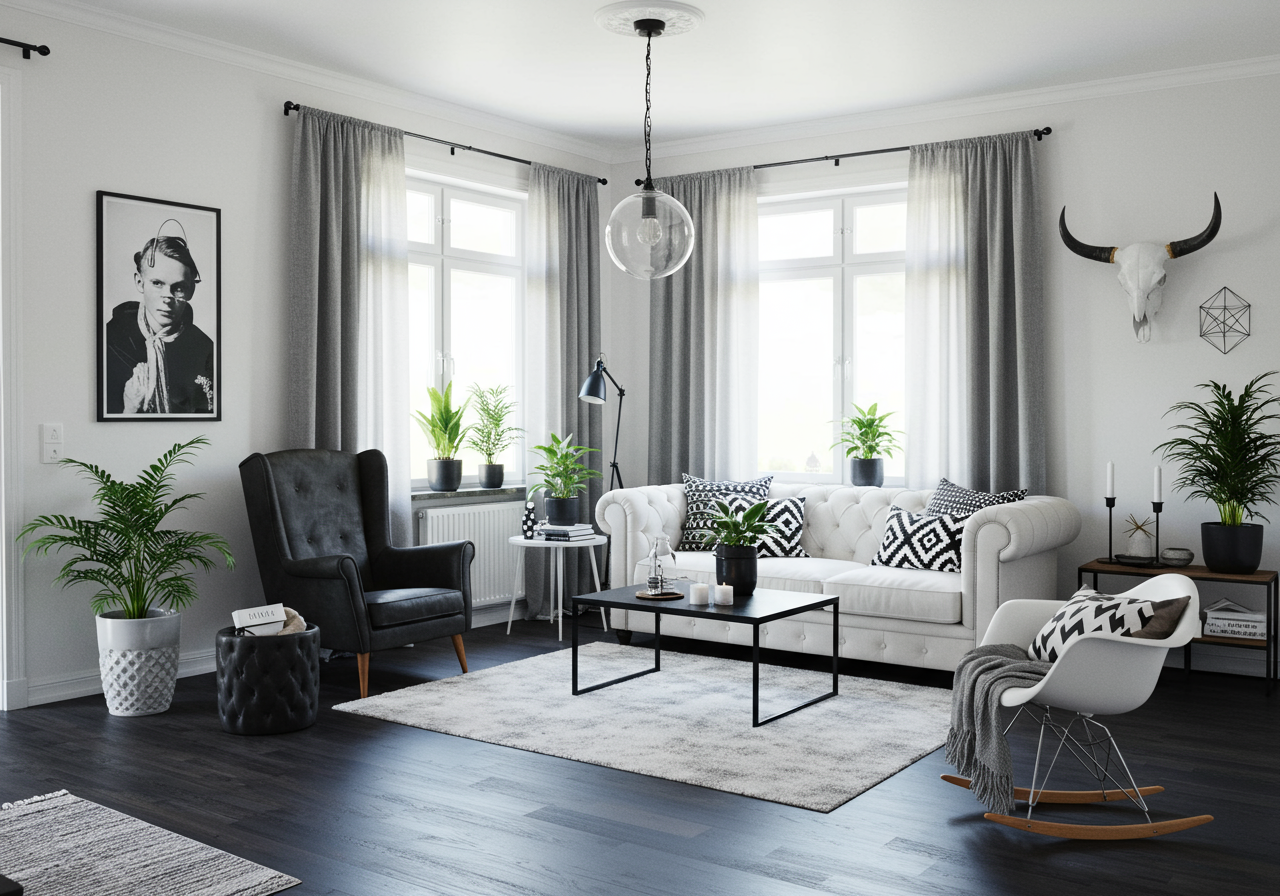
Scandinavian style living room | Image credit: Lundin
Like its other modernist counterparts, Scandinavian style embodies a move towards simplicity, functionality and efficiency; it also however brings an emphasis on affordability to the palette.
Stirred by democratic design ideals,
scandinavian design strikes a careful balance between minimalist efficiency and warm, personal invitations.
This interior style is characterized by organic materials, bare ornamentation and clean detailing. The color palette swims in black and white, with grays and blues or the occasional pop of color bring visual respite. Silhouettes and contours in scandinavian interiors are more rounded and sinuous, which along with organic textures create a much cozier vibe in even the barest of layouts and arrangements.
#5 Industrial Style
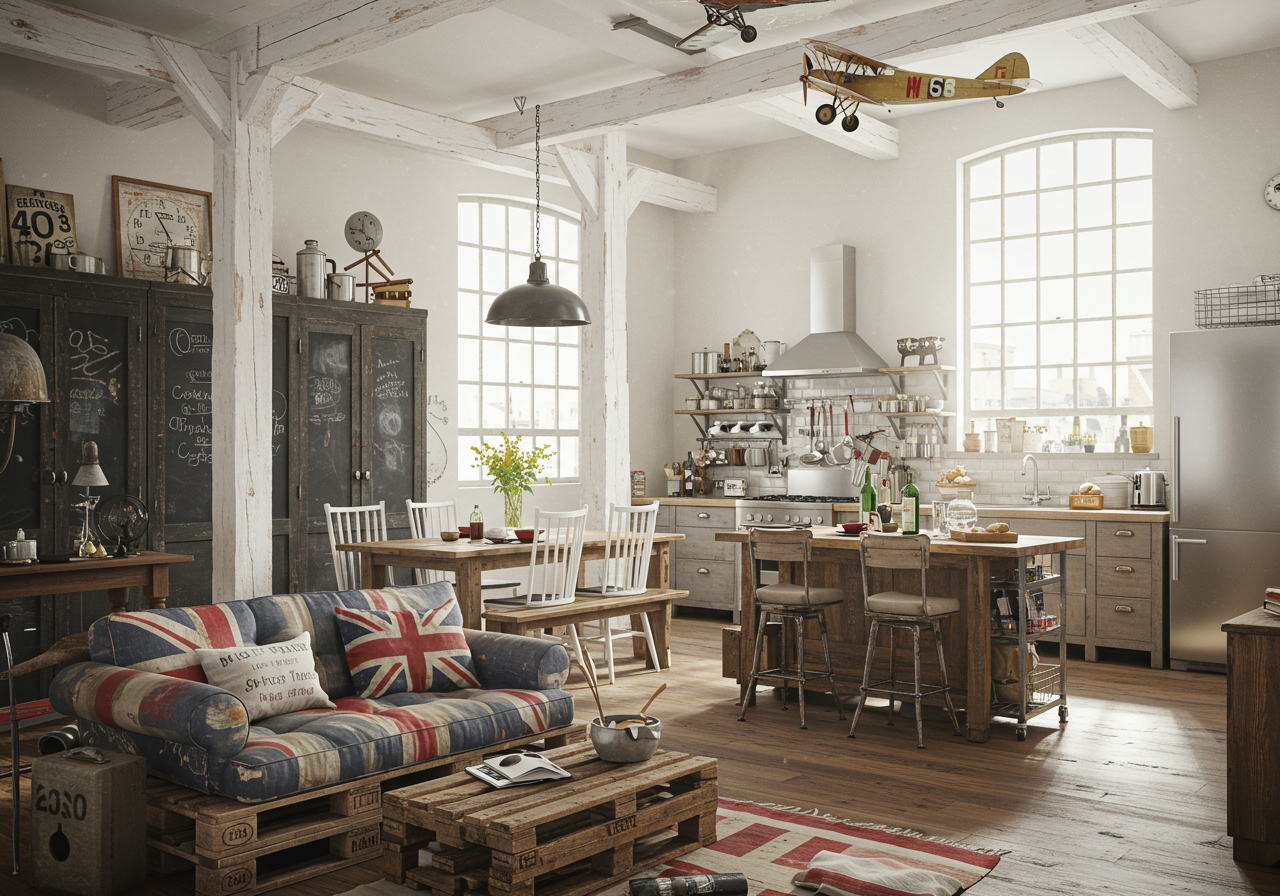
Image from the article: Industrial Style Kitchens by Marchi Group
Industrial interiors celebrate the modernist eye for efficiency and functionality by transforming the working parts of a building into its primary aesthetic.
Beams, columns, pipes, ducts and flanges are brought to the fore to emphasize the ‘machine for living’, rendering these interiors in a largely masculine overtone. Unlike many other offshoots of the modern movement, industrial style interiors do not shy away from weight or roughness, embracing the worn, recycled and salvaged.
Often the style of choice in warehouse conversions and loft remodelings, industrial interiors tend to stick to warm, neutral colors such as grays and browns with iron or steel, exposed concrete and unfinished brickwork complementing them perfectly. When choosing furniture and décor, vintage industrial designs complete the look.
#6 Contemporary Style
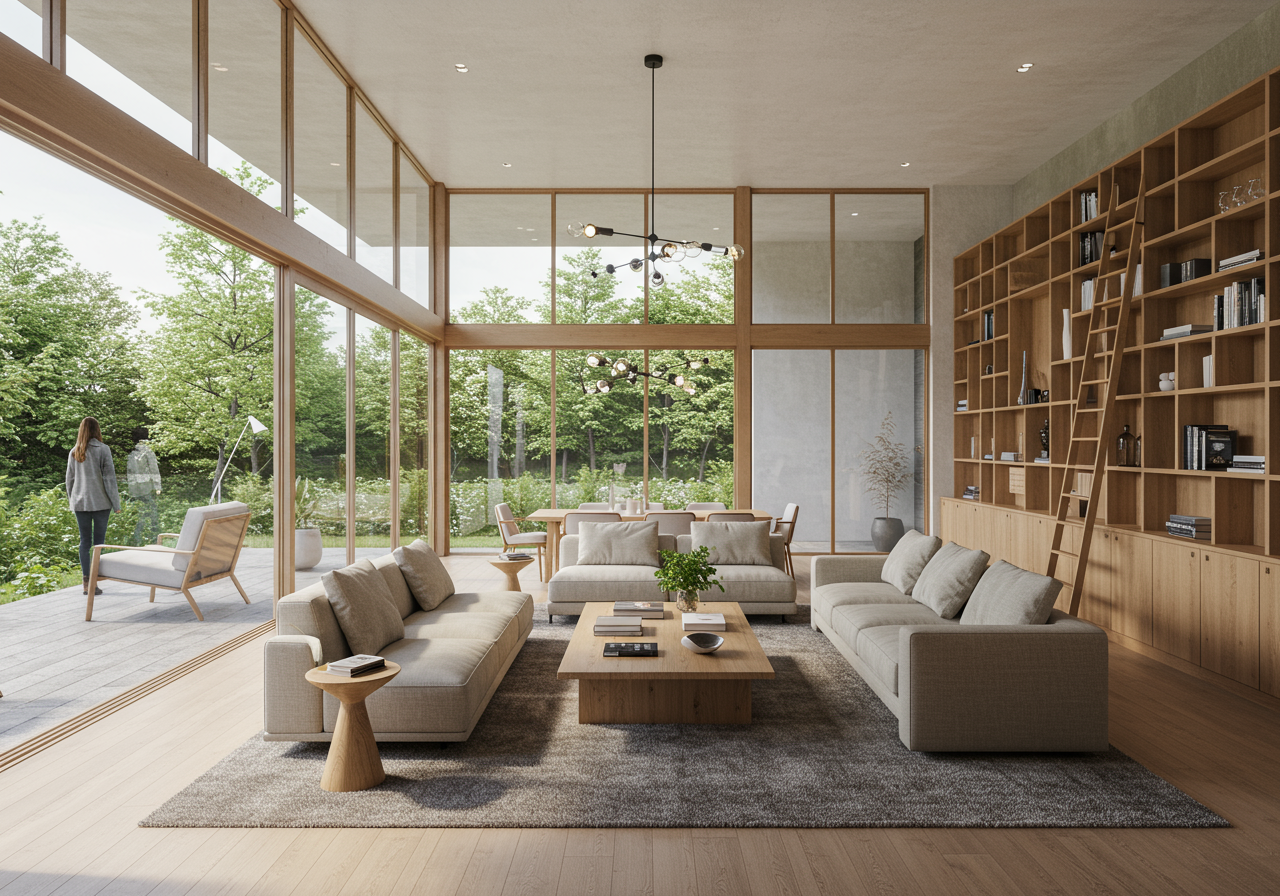
Contemporary living room at the Hillside House by Zack de Vito
The Contemporary style,
by its very definition, is current and therefore is an ever evolving palette that echoes prevalent trends and tastes at any given time. As such it is tricky to characterize this style as a set of given ideas, intentions or traits; however, as a design style it diverges from the modernist aesthetic by a presenting a more balanced and rounded approach to interior design.
With the Mid-century modern style being in favor at the moment, contemporary interiors currently borrow heavily from it; however, these elements, colors and lines are laid out in gentler compositions that make as much room for visual indulgence as functional efficiency. Neither cold nor too formal, these are warm,
cozy spaces that are a lot more fluid and instinctive in their making.
#7 Urban Style
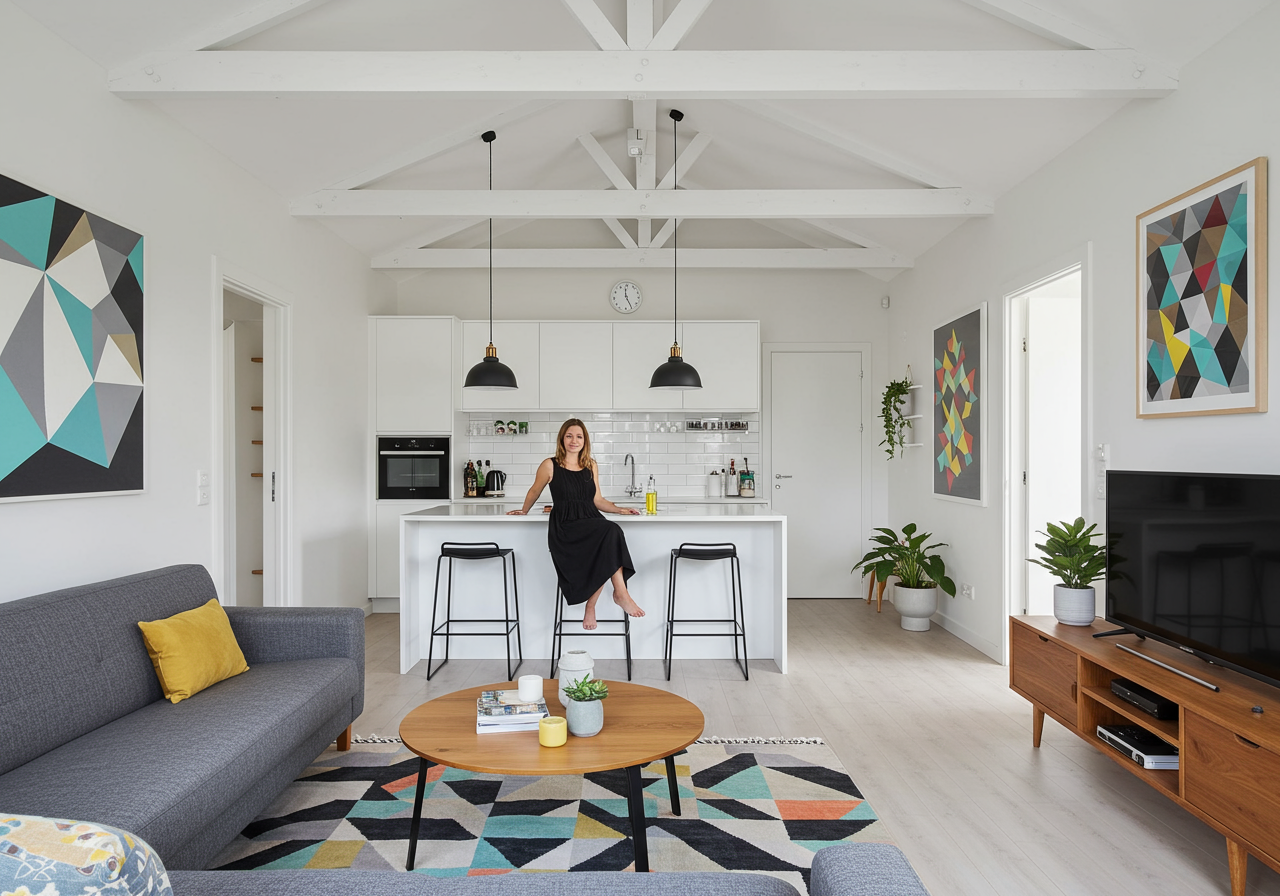
Urban apartment by Studio AUTORI Designs
The emphasis of urban style interiors lies on elements and designs that bring the gritty vibe of the urban context indoors. Not afraid to experiment with unusual materials and features, this interior design style takes its pick of ideas to arrive at distinctive, and often bohemian, looks.
Leaning towards industrial sensibilities, the Urban style elaborates on structural features, industrial components and exposed ducting, much like its mentor. However these elements are combined in clear open spaces, which float in light colors and clean finishes that add a touch of feminine elegance to the proceedings. In fact the urban interior usually comes with a hefty dose of artistic indulgence, often turning to the unexpected for answers.
#8 Traditional / Classic Style
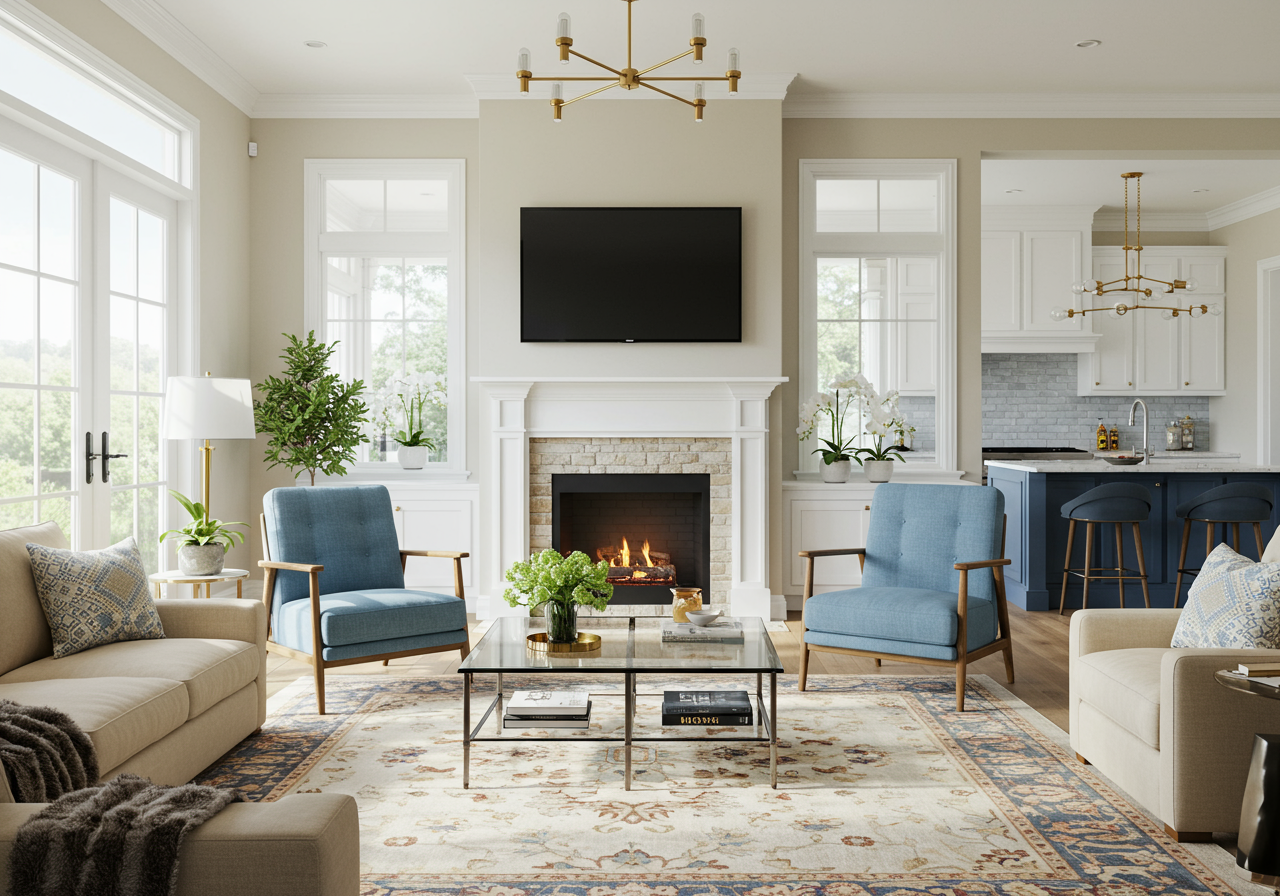
Traditional style living room by Brownhouse Design
Doused in the comforts and indulgences of classic European décor, the
Traditional style turns to the past to create ideas for the future. The approach here can be true to source or a slight retake on classical suggestions, bringing time-tested elements, motifs and proportions to fit a modern lifestyle.
Traditional style interiors are set apart by their silhouettes; winged back chairs, elaborate furniture pieces, claw footed tables, and other furniture and feature designs usually have their origins in 18th century English, Neoclassical, French Country or Colonial styles.
The backdrops are usually pale and simple, with rich colors, lines and profiles imbibing classical opulence into the space.
Delicately carved and lacquered dark wood furniture and architectural embellishments abound in this interior style.
#9 Transitional Style
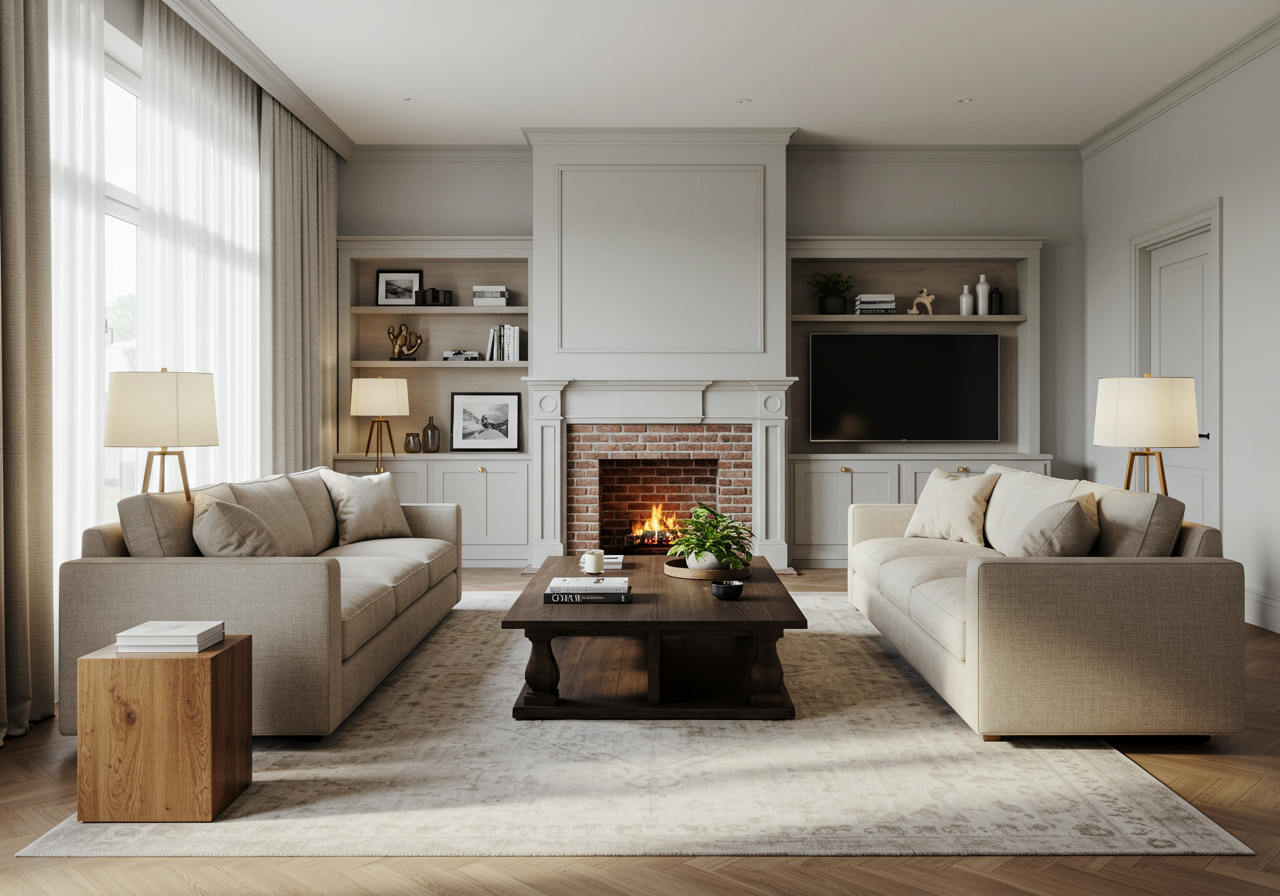
Transitional style living room | Image credit: Pinterest
This beautiful interior design style is a delightful fusion of, and in this way, a surprising transition between two interior design trends with specific individuality – the classical traditional and the contemporary modern. These two styles might seem too far apart from each other, with the Traditional style being considered somewhat ‘old fashioned’ and ‘heavy’, while the Modern style somewhat ‘impersonal’ and ‘cold’. Yet, designers have discovered a smart way to take the best of these two ‘worlds’ and display it in a most pleasing manner.
#10 Art Deco Interior Design Style
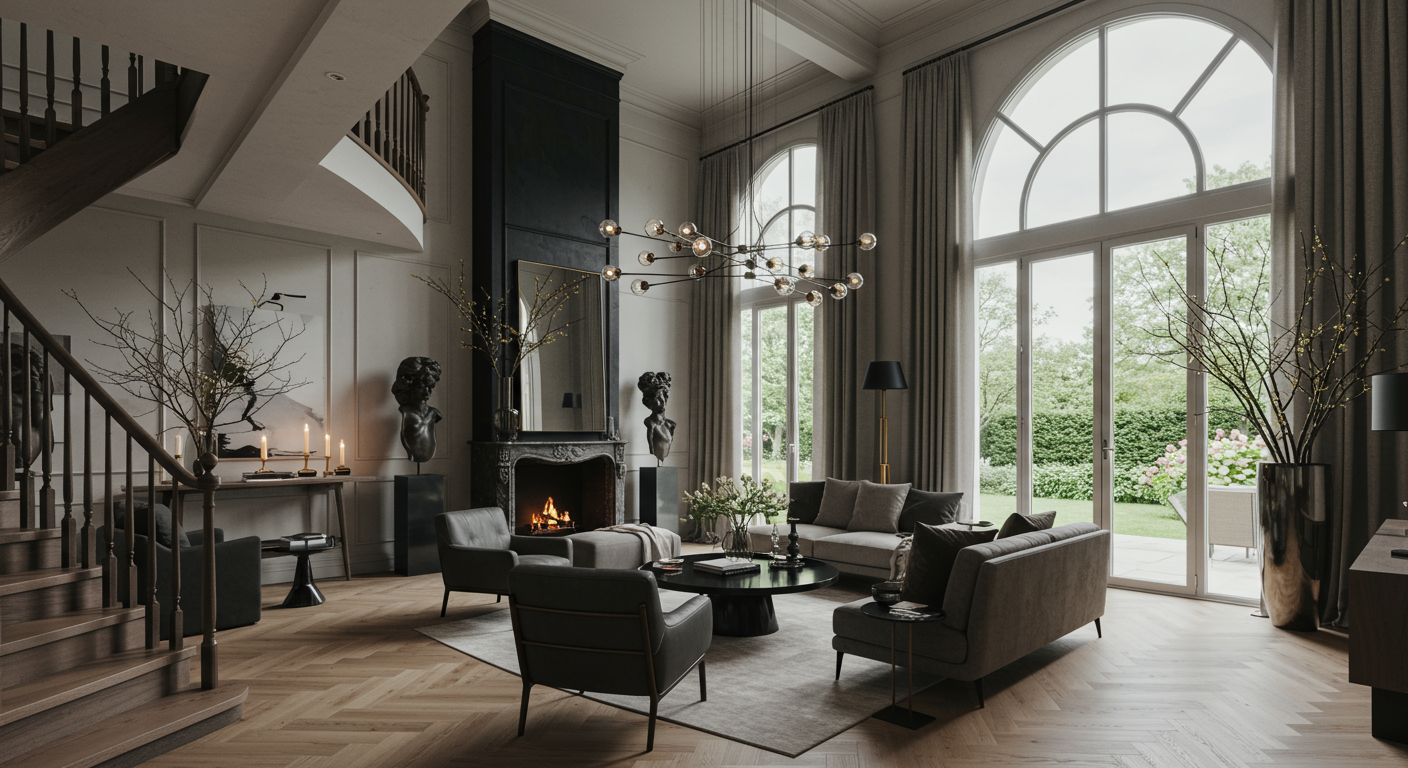
Art deco style living room by Moustroufis Architects
The bold and bombastic is expressed in elegant compositions through sheer balance and restraint in the Art Deco style. With its origins in the excitement and glamour of post war Europe and America,
the style was born in the 1920s to offer a new aesthetic for a new time.
At its heart this style is a sensual exploration of order and symmetry, with the lines and geometry taking charge of the designs and compositions.
Angular patterns, layered designs and bold curves set off a play of form and aesthetics echoed in shiny chrome and brass fittings, glossy paint, lacquered wood, and an abundance of sprinkled glass and mirrored elements.
Art Deco interiors are also set apart by their lighting with its distinctive ambience achieved through layering of up and down lighters.
#11 Country Style
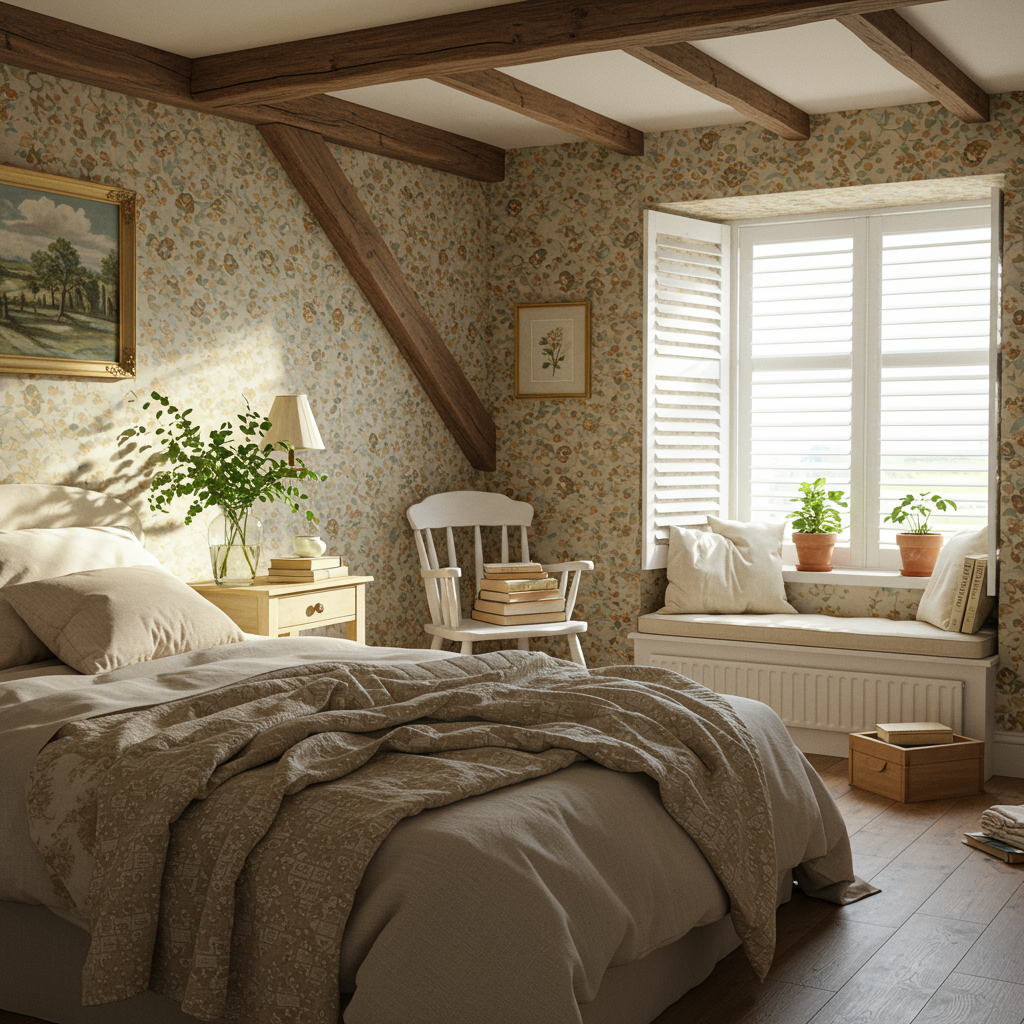
Image from the article: We Love This Cozy Country Home in the Woods
Cozy is key when designing
country styled interiors, as these spaces evoke the warm embrace of a timeless cottage. As such this style can root in different traditions (English, French, Tuscan or Scandinavian to name a few) and therefore can vary significantly in its outward vocabulary. However each of these palettes is united in their love and appreciation of the organic and the rustic.
Wood, pottery, and a host of organic materials populate these spaces, carved out in a typically intimate scale and character.
Warm muted colors and patterned fabrics are popular, as are papered or stenciled walls. There is a rich variety to the Country style, with an array of elements and features coming together to create warmth, fluidity and balance.
#12 Shabby Chic Style
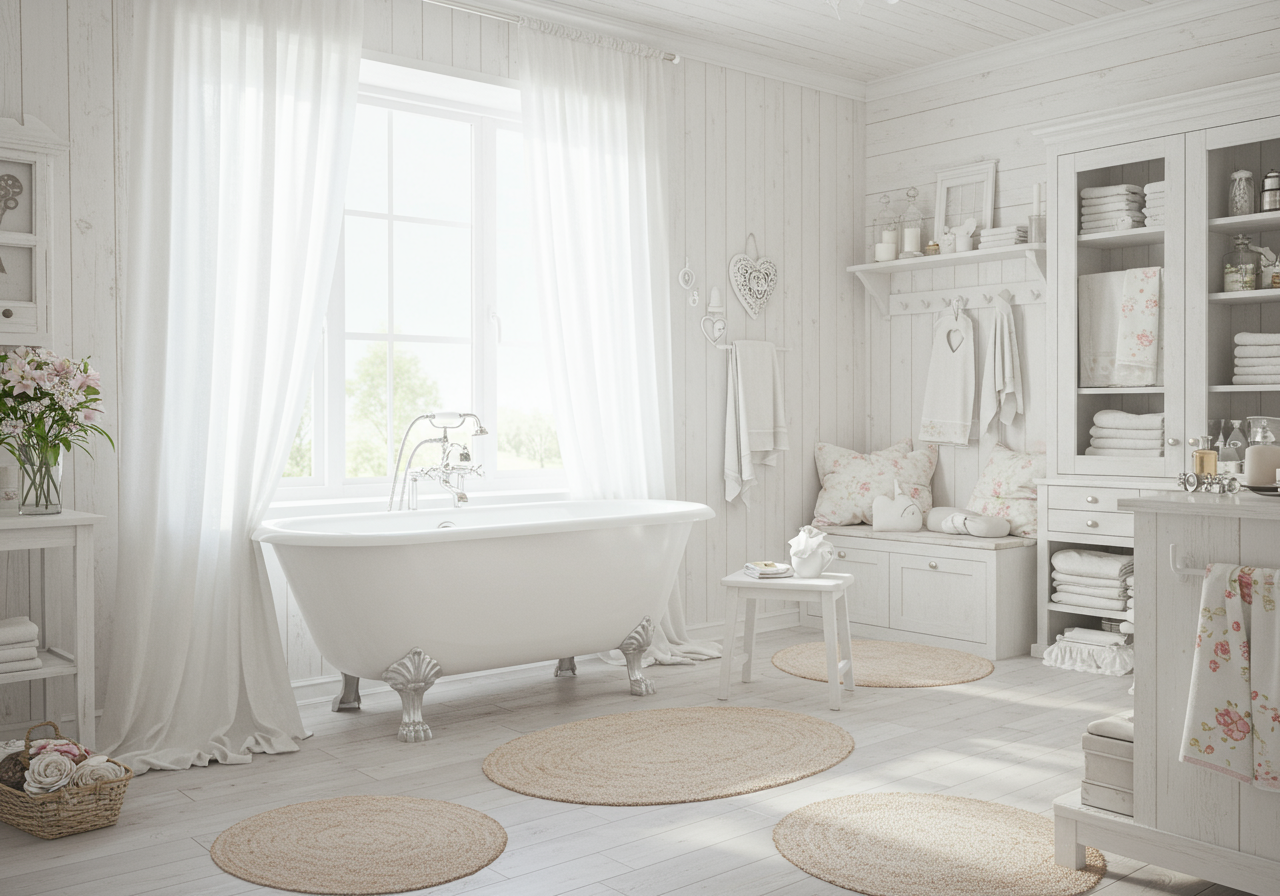
Shabby-chic style bathroom by Schmidt Custom Homes
Arising in the 1980s, the Shabby chic style reinterpreted traditional British aesthetics to create soft, feminine visual statements.
Drawn out in markedly light and airy spaces, this style strikes a distinctive balance between the weathered look of an English cottage and the delicate indulgences of more classical influences. The result is an utterly romantic vibe with a penchant for the finer things in life.
Soft cotton and French linen is drawn out in fluid designs that explore the pastels to perfection.
The time worn is celebrated as a collection of vintage elements and features that bring the space alive; even new furniture is given a distressed look to soften the overall look, feel and tone of the interiors.
